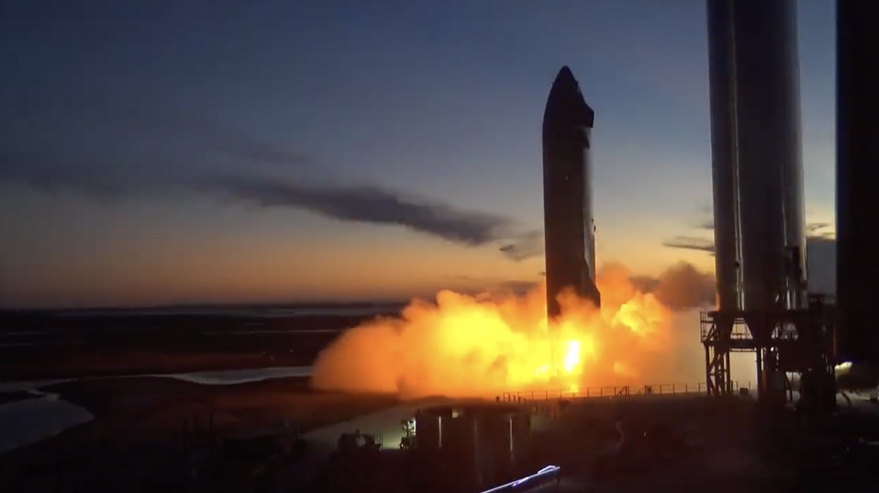TAMPA, Fla. — SpaceX has dropped a plan to use Falcon 9 to launch the 30,000 satellites in its proposed second-generation Starlink broadband constellation, and is instead focusing on a configuration leveraging its upcoming Starship vehicle.
The decision follows development progress that SpaceX said exceeded the company’s expectations and means it could start “launching the Gen2 system as early as March 2022,” SpaceX lawyer William Wiltshire said in a Jan. 7 letter to the Federal Communications Commission.
Starship missions are subject to a favorable environmental review into SpaceX’s launch facility at Boca Chica, Texas, which the Federal Aviation Administration expects to complete Feb. 28.
SpaceX currently has FCC approval to deploy 4,408 satellites to low Earth orbit at an altitude of around 550 kilometers, and has launched more than half of them to date. The FCC has not yet approved SpaceX’s plans for the larger, second-generation constellation. SpaceX asked the FCC to expedite approval now that it has settled on the Starship-launched configuration.
“Just as terrestrial wireless networks meet customer demands by operating more than one generation of technology simultaneously, SpaceX plans to use both of its networks to provide superior service,” Wiltshire wrote.
“SpaceX will continue to maintain its first-generation system, launching replacement satellites as appropriate to sustain the orbits in which it operates, even as it conducts the initial deployment of the Gen2 system. To be clear, operating both systems simultaneously does not mean that SpaceX will necessarily operate all of the satellites under its authorizations at all times in all areas.”
He said a “SpaceX customer user terminal will be able to receive service from satellites of either system.”
In August, the company proposed two configurations for a follow-on network it originally submitted to the FCC in 2020, with both options designed to spread satellites more evenly across nine to 12 inclined orbits for denser and more consistent coverage — without needing additional spectrum or spacecraft.
The proposed Starship configuration, which SpaceX had earlier said was its preferred option, comprises 29,988 satellites at altitudes of between 340 and 614 kilometers across nine inclined orbits.
The now-abandoned Falcon 9 configuration would have spread 29,996 satellites across 12 orbital inclinations, at altitudes between 328 and 614 kilometers.
Amazon and other SpaceX rivals had called on the FCC to dismiss the amended plan, saying requesting permission for more than one configuration encourages speculative application behavior from future constellation operators.
